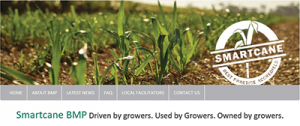Read the latest information on
Foot-and-mouth disease
Sugarcane | Sugarcane best management practice | Sugarcane biosecurity essentials | Sugarcane biosecurity zones | Sugarcane pests and weeds
 Smartcane BMP is an industry led, government supported, best management practice system for cane growing across Queensland.
Smartcane BMP is an industry led, government supported, best management practice system for cane growing across Queensland.
In addition to allowing growers to demonstrate how well they manage farming operations, Smartcane BMP also lets growers identify improvements in practices that they can implement.
Grower participation is entirely voluntary – Smartcane BMP is designed to support your business productivity and profitability.
Most diseases of sugarcane are not managed by crop protection products alone. Instead they are managed using a combination of hygiene practices, variety selection, fallow management, and the use of clean propagation material of recommended varieties.
The Weed, Pest and Disease Management and the Crop Production and Harvesting Management modules of Smartcane BMP support biosecurity principles and actions and are recommended for all sugarcane producers.
You can answer a series of assessment questions and the system will tell you how you rate against the industry standard for each practice.
If any practice is below the industry standard, Smartcane BMP will tell you what you can do to reach that mark. Go to smartcane.com.au for more information or contact your Productivity Service.
Smartcane BMP has seven modules and a science-based review system to support continuous improvement on-farm and within the industry:
Local facilitators can help you to adopt changes recommended by Smartcane BMP modules.
More information about Smartcane BMP